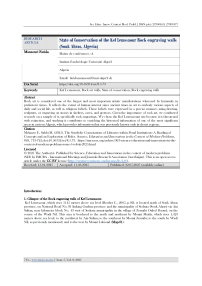State of Conservation of the Kef Lemssaour Rock engraving walls (Souk Ahras, Algeria)
Автор: Mansouri Farida
Журнал: Science, Education and Innovations in the Context of Modern Problems @imcra
Статья в выпуске: 5 vol.8, 2025 года.
Бесплатный доступ
Rock art is considered one of the largest and most important artistic manifestations witnessed by humanity in prehistoric times. It reflects the extent of human interest since ancient times in art to embody various aspects of daily and social life, as well as religious beliefs. These beliefs were expressed in a precise manner, using drawing, sculpture, or engraving on stones in shelters, caves, and grottoes. Given the importance of rock art, we conducted research on a sample of it, specifically rock engravings. We chose the Kef Lemssaouar site because it is threatened with extinction, and studying it contributes to enriching the historical information of one of the most significant areas in eastern Algeria, which provides information that was previously known only in desert regions.
Kef Lemssaour, Rock art walls, State of conservation, Rock engraving walls
Короткий адрес: https://sciup.org/16010720
IDR: 16010720 | DOI: 10.56334/sei/8.5.73
Текст научной статьи State of Conservation of the Kef Lemssaour Rock engraving walls (Souk Ahras, Algeria)
X RESEARCH x ARTICLE State of Conservation of the Kef Lemssaour Rock engraving walls (Souk Ahras, Algeria) Mansouri Farida Maitre de conférences -A Institut d’archéologie Université Alger2 Algeria Email: Doi Serial Keywords Kef Lemssaour, Rock art walls, State of conservation, Rock engraving walls
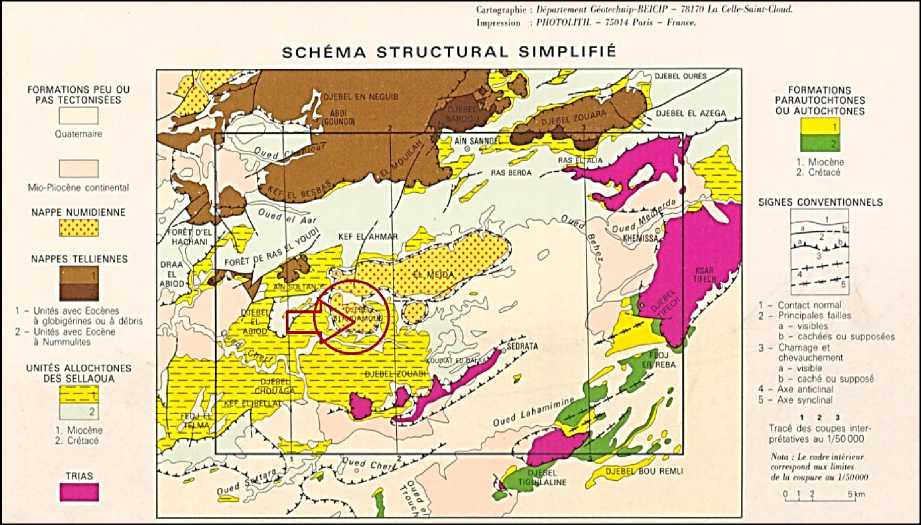
Map.01: Geology of the Kef Lemssaour site (taken from the Sedrata map)
The site dates back to the prehistoric period and falls under natural Rock engraving walls, as mentioned in the writings of L. Lefebvre and C. Roubet. The works of these two researchers are considered the most comprehensive in analyzing and studying this archaeological site. However, the research has not been sufficient, as it has not precisely determined the historical period of the site, merely attributing it to the prehistoric period.
The name of the site poses a problem in itself in terms of writing and pronunciation, although the meaning is the same, and being local (Arabic), it means the illustrated cave in reference to the drawings depicted on the Rock engraving walls. There are several names for the site, including: Kef lemssaouar, which is the name agreed upon by the inhabitants of the region. As for the researchers who studied the region, they call it Kef-Messiouer or El-M’saoura (Roubet C., 2005, p. 02).
Research on this site first began in 1892 CE by R. Bernelle, who is considered the first to discover the Rock engraving walls. He wrote a report detailing that the engravings were crafted with precision and significantly predate the Roman presence in the region. The report was published in the same year (Bernelle R., 1901, p. 48). Bernelle also documented photographs of the main mural’s engravings along with measurements, asserting that they represent an authentic depiction of hunting and remain in excellent preservation.
As for St.Gsell, he addressed this site in the first volume of The Archaeological Landmarks of Algeria, published in 1901 CE. He focused exclusively on the main mural located on a large rock in the mixed municipality of Sedrata, citing an image of Rock engraving walls as evidence (Gsell St. 1901, p.48).
In 1921 CE, Flamand-G.M published an incomplete and inaccurate depiction of the lions, relying on a photograph captured by Professor Blayac.J (Flamand G.-B, 1899, p.58).
In a report published in the Berber Encyclopedia, Roubet.C provided a summary of the site by presenting the studies of previous researchers. She offered a comprehensive and accurate description of the site, including its components, dimensions, and geographical location (Roubet C., 2005, p.02).
-
2 Description of the Murals:
The Kef lemssaour site consists of three murals, each depicting a different theme. However, they share a commonality in that they belong to the natural Rock engraving walls of the pastoral period. These murals were created on a single massive rock formation, yet they are distinct from one another and can be examined in detail.
A-The First (Main) Mural
Located on the western side of the site, this mural is a large panel measuring 5 meters in height and 7 meters in width, forming a single façade. It features two separate groups divided by a rock fissure. The first group is situated on the right and depicts a family of six lions gathered around a wild boar, accompanied by two jackals that are waiting to take their share of the prey. The lion family consists of two large males, two medium-sized lions, and two cubs.
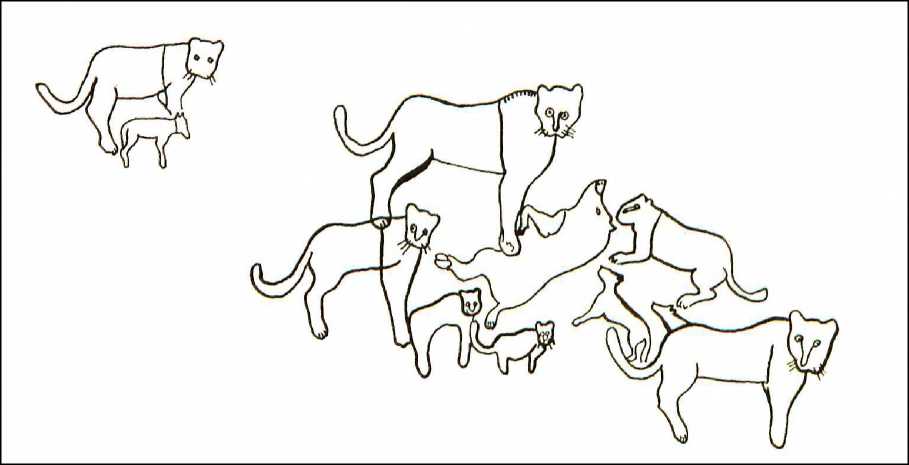
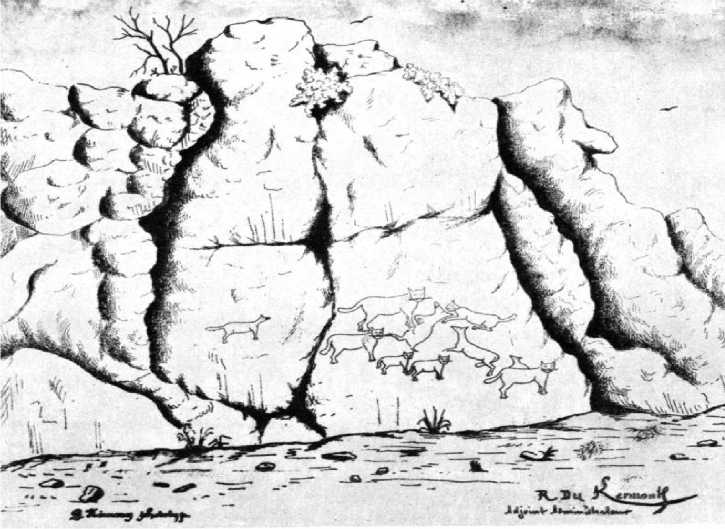
Fig.2: General elevation of the main mural from Bernelle, Antique Vestiges of the mixed commune of Oued Charef. »
B – The second mural.
The southern façade is engraved and presents a theme that is quite different from the western façade in terms of style and technique. According to Solignac, it depicts engravings of three ostriches and a mammal that appears to be a goat (Solignac M., 1928, p.117) (Fig.03).

Fig.3: Elevation of the second mural from Solignac (M), The Inscribed Stones of Eastern Berberia (Eastern Constantine and Tunisia).
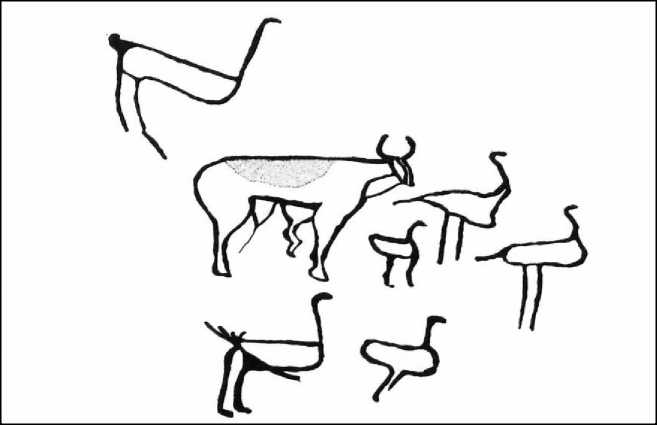
C - The third mural.
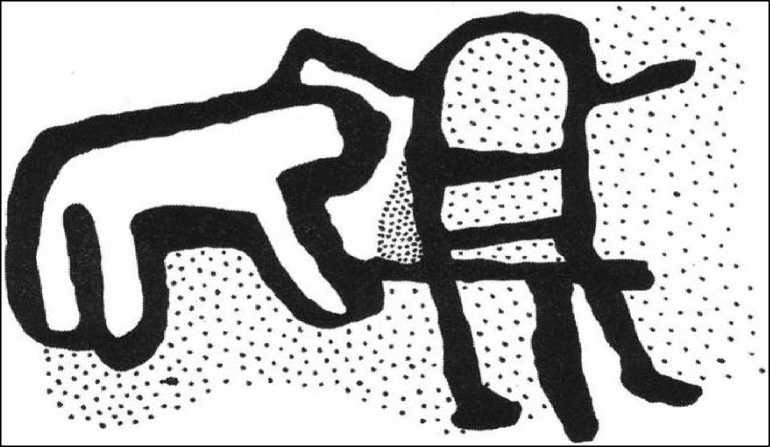
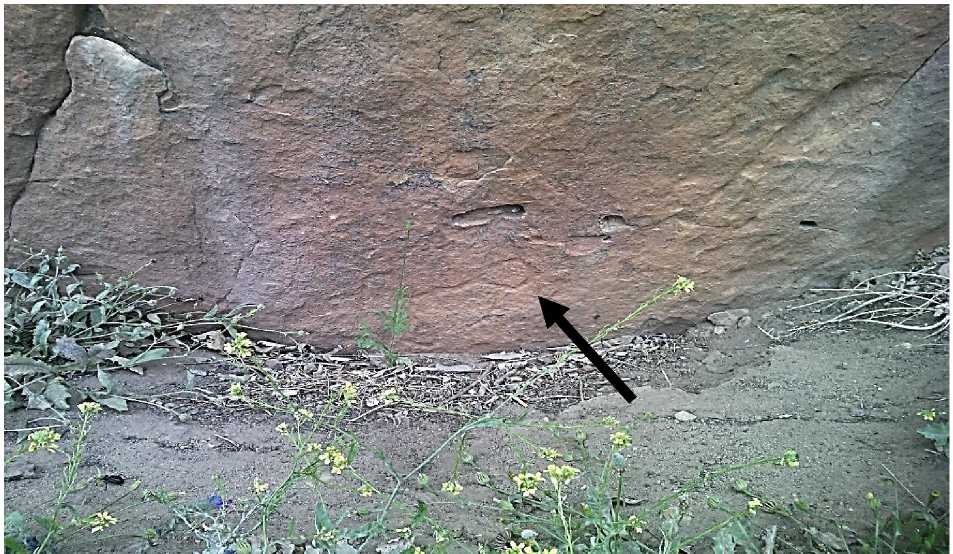
Fig.6: The possible engraving of the antelope (the second part of the third mural).
Through our fieldwork, we observed the mural located on the western façade, which consists of two groups. The first group is engraved with six lions in a lateral position, with their heads rounded except for one lion that is not in the same position. We see two adult lions, two medium-sized lions, and two smaller ones, in addition to the prey represented by a pig lying under the front legs of the large lion that is at the center of the family. There are also two foxes waiting for their share of this prey, one of which shows a small part consisting of its neck and head. To the left and above this group, we find the second group consisting of an adult lion and a fox waiting for the family from the first group to leave in order to claim a share of the prey (Fig.7).
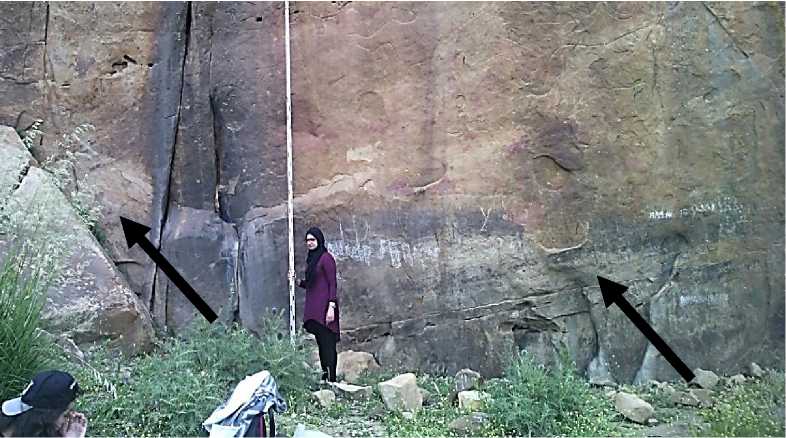
Fig.7: The first and second sections of the main mural.
3-Signs of damage to the Rock engraving walls according to the number of each animal. A – The main mural (Fig.8).
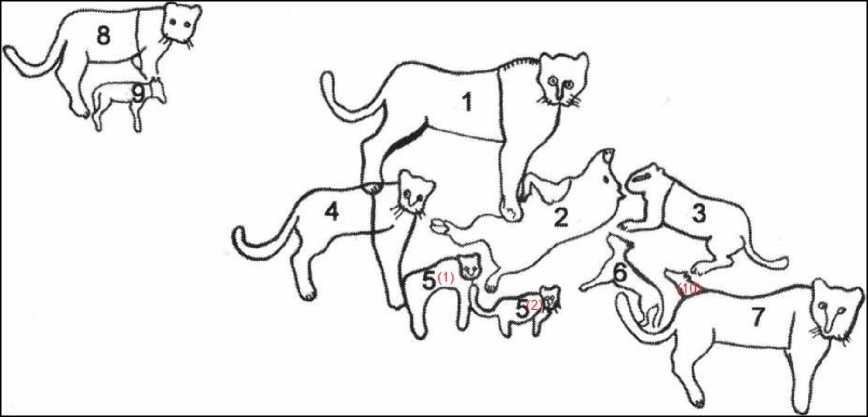
Fig.8: Elevation of the main mural with modifications. »
Number 1 : We observe that it is still in good condition, however, signs of damage have begun to appear on part of the tail as well as on part of the right hind leg, where there is a relative deterioration. Additionally, there is damage represented by a crack on the back of the lion, which separates the tail from the hindquarters and extends to halfway down the leg. There are also some protruding holes and roughness on the face and shoulder, as well as a hole beneath the other leg, which has distorted the underside of the foot.
Number 2: It is in good condition. »
Number 3: It is still in very good condition (despite the distorted elevation of reality due to the addition of some details around the eye) compared to the elevations by Vaufry and Gillette &Louis Lefebvre.
Number 4 : It is in a very advanced state of deterioration, as we observe significant damage to various parts of this animal. Only the eyes, ears, and nose remain from the face, and we notice some distortion between the mouth and nose due to erosion. There is a crack that extends across the neck and face, and another that runs from the face and shoulder down to the foot.
Number 5 ‘1’ : It is in a deteriorated condition, as we observe the disappearance of the front leg and the face is not clearly defined.
Number 5 ‘2’ : We notice that the image is not very clear, in addition to damage to the neck and legs, and the details of the face, especially the eyes, nose, and beard hair, are not well defined.
Number 6: It is still in a condition with clear details, however, we notice the disappearance of part of the tail due to factors of deterioration.
Number 7 : It has been subjected to numerous factors of deterioration, despite the details being quite clear. We observe the disappearance of the hind leg due to human factors, specifically fire, as well as the disappearance of the front leg, eyes, and nose. Additionally, part of the right shoulder muscle is missing due to various factors of deterioration, including fragmentation, and the tail is not clearly defined in the middle, despite its presence.
Number 8 : It is in a very deteriorated condition, with only some relatively minor details remaining, specifically part of the tail, face, and hind legs due to factors of deterioration.
Number 9 : It is in very good condition, despite the slight disappearance of a small part of the face between the nose and the ear. »
Number 10 : It is not numbered in the image, and we observe a part of the neck and face of the jackal in good condition, with complete details, appearing on the back of Number 7, the lion.
B – The second mural : It is in an advanced state of deterioration, where the wall carvings have become unclear, and some have disappeared due to multiple factors of deterioration. The quality of the rock (sandy) has also contributed to this (Fig.9).
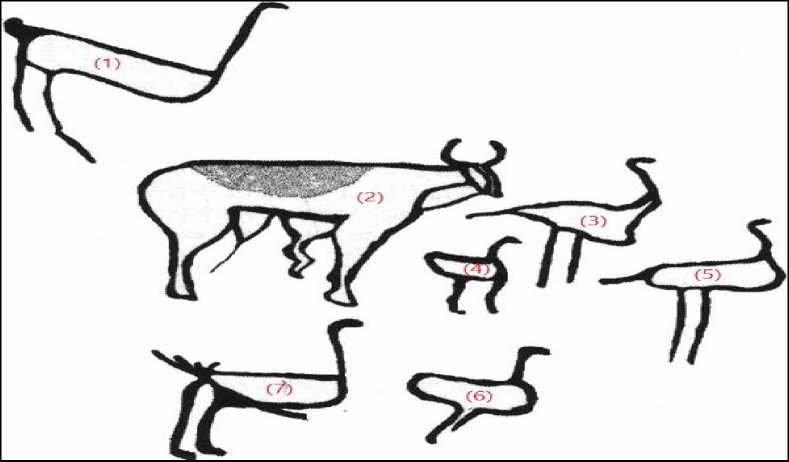
Fig.9: Raising the second mural with modifications.
Number 1 : Unclear despite retaining details due to the impact of various natural factors, and we observe a crack on one of the legs.
Number 2 : In good condition, and all the details remain clear to this day. What I notice is the presence of the tail, which has not been raised before, nor has it been mentioned in any of the references.
Number 3 : Still clear and in good condition despite being affected by a factor of deterioration, which is the crack that extends from the top of its head to the tail.
Number 4 : No trace remains, it has completely disappeared.
Number 5 : Its shape is still clear despite the deterioration of its condition due to exposure to many factors of damage.
Number 6 : It has disappeared due to various factors of damage.
Number 7 : It is in a very deteriorated condition, with only the head, neck, and parts of the back and abdomen remaining, while the legs and tail have disappeared (Fig.10).
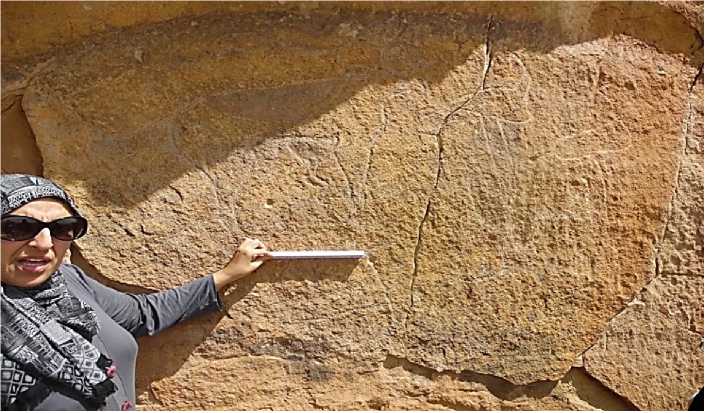
Fig.10: The second mural.
C-The third mural.
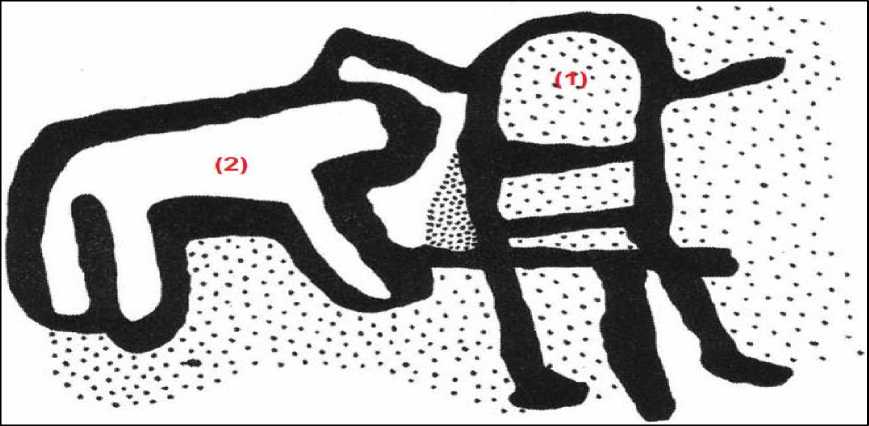
Fig.10: Elevation of the third mural with modifications.
Number 1 : A person, who is a shepherd, is unclear and in a deteriorating condition, on the verge of collapse (Fig.11).
Number 2 : The engraving depicts a ram that is also in a poor state.

Fig.11: The ram and the shepherd (the first part of the second mural).
Conclusion.
These rock engravings at Kef Lemssaour provide conclusive evidence that this area was inhabited by prehistoric humans who lived here for a period of time. These engravings also confirm that the region was once abundant with lions, which aligns with the name of the state of Souk Ahras to which the Kef Lemssaour site belongs, as the meaning of « Ahras » is an Amazigh word that translates to « lions » Additionally, the depiction of the wild boar indicates that this species of animal indeed lived in the area.
Despite the significance of these engravings and their survival over such a long period, they are now at risk of loss and destruction. During our repeated visits to the Rock engraving walls site, we were struck by the deplorable condition of the engravings, which have been adversely affected by three main factors of deterioration. The first factor includes various natural elements that have negatively impacted the preservation of this heritage, compounded by the absence or lack of preventive maintenance. The second factor consists of various human activities, which pose the greatest and most dangerous threat to the integrity of these engravings. Lastly, biological factors have also contributed to fractures and cracks, along with the disintegration of the rock.

